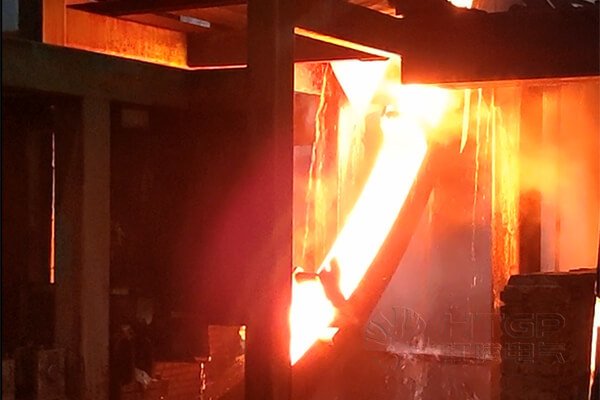Melting Metal Forging
Melting metal forging is an important metal processing technology.

Melting metal
Purpose: Heat the metal raw material to liquid state to make it suitable for forging. Through smelting, impurities in the metal can be removed, the chemical composition can be adjusted, and uniform liquid metal can be obtained.
Method: Common smelting methods include electric furnace smelting, gas furnace smelting, etc. Different metals and production requirements will choose different smelting equipment and process parameters.
Forging
Definition: A processing method that uses forging machinery to apply pressure to metal billets to cause plastic deformation to obtain forgings with certain mechanical properties, certain shapes and sizes.
Process:
Heating: Pour the smelted liquid metal into the mold, cool it into a billet, and then heat it again to the appropriate forging temperature.
Forging operation: The billet is struck, extruded, and other operations are performed by forging hammers, presses, and other equipment to gradually change its shape.
Subsequent processing: Forgings after forging may require subsequent processing such as heat treatment and machining to improve their performance and precision.
Advantages
Improve metal structure: Forging can refine the grains inside the metal and improve the strength, toughness and plasticity of the metal.
Improve material properties: Through reasonable forging process, casting defects in the metal, such as shrinkage and looseness, can be eliminated, and the density and uniformity of the material can be improved.
Produce complex shapes: Various parts with complex shapes can be forged as needed to meet different engineering needs.
Precautions
Control the melting temperature and time to avoid excessive oxidation and burning of the metal.
Select appropriate forging equipment and process parameters to ensure the safety and quality of the forging process.
- Perform appropriate heat treatment and inspection on the forged parts to ensure that their performance meets the requirements.
- Quality control
In order to ensure the quality of the forged parts, strict quality control measures should be implemented throughout the melting metal forging process. This includes monitoring the melting temperature and time, as well as conducting regular inspections on the equipment and the forged parts. Any deviations from the process parameters should be immediately addressed to prevent defects in the final product.
In addition, it is essential to conduct thorough testing on the forged parts to verify their mechanical properties and dimensional accuracy. This may include non-destructive testing methods such as ultrasonic testing or magnetic particle inspection, as well as destructive testing methods like tensile testing or hardness testing. By implementing a comprehensive quality control system, manufacturers can ensure that the forged parts meet the required specifications and standards.
Furthermore, proper maintenance of the forging equipment is crucial to the success of the melting metal forging process. Regular inspections and maintenance checks should be carried out to ensure that the equipment is functioning properly and safely. Any signs of wear or damage should be promptly addressed to prevent accidents and ensure the efficiency of the forging process.
Overall, melting metal forging is a critical metal processing technology that offers numerous benefits in terms of improving material properties and producing complex shapes. By following the proper procedures and implementing quality control measures, manufacturers can achieve high-quality forged parts that meet the demands of various industries.